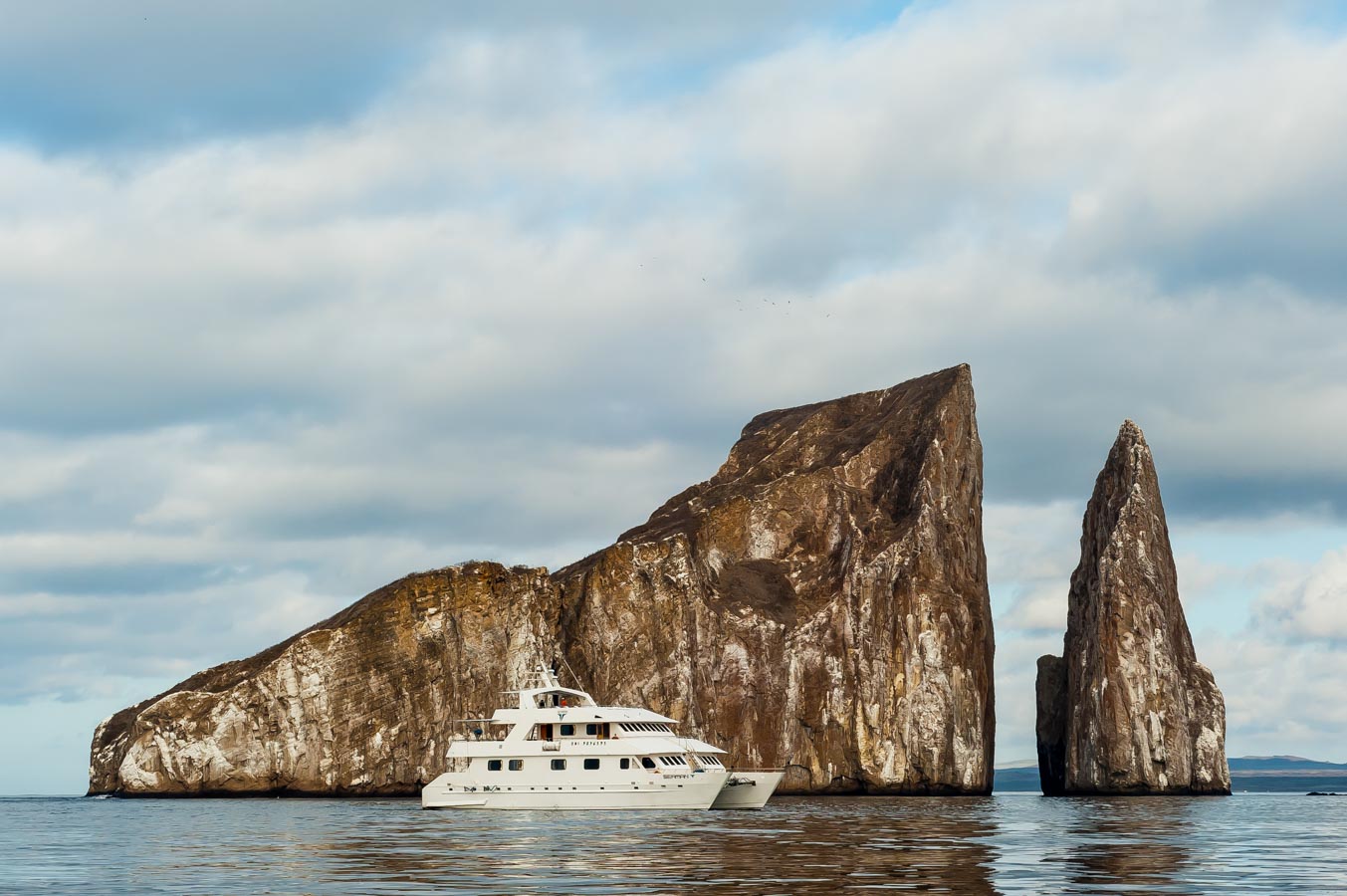AM: SAN CRISTOBAL ISLAND, GALAPAGUERA
A short visit will take place at the Galapaguera, a good place to observe Galapagos tortoises in its natural habitat. San Cristobal island has endemic species such as: the Mockingbird Nesomimus melanotis, lava lizard (Microlophus bivittatus), Chatham Leaf-toed Gecko (Phyllodactylus leei) and the tortoises. All of these species can be observed in this place, the beach is really big and it works as a nesting zone for marine tortoises. Between January and May, it is common to find the footprints of the female tortoises who have climbed to the sand dunes to deposit their eggs! This truly is a worthy experience to be a part of.
PM: CERRO BRUJO
Cerro Brujo is a beautiful white coral beach where you can swim and watch birds and sea lions, plus you can snorkel. This is the first coast where Charles Darwin walked on, in 1835. In this marvelous lava landscape, you can watch seabirds like blue-footed boobies, Nazca boobies, herons, frigate birds and shore birds. The protected bay is well known for its young tortoises which like to swim around.
The pools with salty water behind the sand dunes were used by the fishermen as a salt mine in order to preserve food for the local population. Among the fauna you can observe the Chatham Mockingbird and the San Cristobal Lava Lizards, both species are endemic to the island and unique to the area. Furthermore, you will see the Galapagos turtles and with luck, the little bird known as the Pájaro Brujo in Spanish, an endemic species in San Cristobal Island. The vegetation covers all the route, where you can find species like the candelabrum cactus and carob trees. Located on the north coast of Isla San Cristobal it is a peaceful place with white sand and crystal water, a perfect combination for an incredible stay.
